It’s traditional and timeless and it’s also trending – again. We check out the recent popularity of terrazzo in hospitality projects.
April 26th, 2018
Terrazzo has a longstanding legacy in architecture and design, originating in sixteenth-century Italy when Venetian marble workers resurfaced their terraces (hence, terrazzo) with left-over marble scraps. Today, it’s being used for purposes beyond paving as designers become more daring, valuing the product for its versatility, visual impact, resilience and robustness in hospitality environments.
Terrazzo is a composite material that consists of chips of marble, quartz, granite, glass or other material poured with a binder and laid as tiles. Italian immigrants brought their expert skills to Australia in the early-twentieth century, and it became popular in art deco design, which favoured polished and decorative surfaces. Terrazzo was associated with contemporary design in the mid-twentieth century; commonly used for commercial and institutional projects during the 1970s; and the namesake of Ettore Sottsass’ architecture and design magazine in the 1980s and ’90s.
Designers today are taking advantage of the diversity, adaptability and affordability of the reconstituted stone, using it for table and countertops, vanities, furniture, lighting and product design. Design studio Bentu, for example, is recycling waste ceramics in China to produce a collection of tables, shelving and pendant lights. “Bentu’s experimental nature has led to its development of specialised manufacturing techniques, allowing them to achieve truly amazing things with terrazzo. Their ability to achieve slenderness and strength with terrazzo is no simple feat,” says Jennifer Schilbach, creative director of Remodern.
In hospitality projects, designers are customising terrazzo for a variety of effects. For Smallfry Seafood, Sans-Arc Studio custom-designed blue terrazzo tabletops to evoke the ocean. “Smallfry draws upon nostalgic fish-shop vibes but reframes them in a modern, textural and immersive space. The terrazzo contributed greatly to this,” Matiya Marovich explains.
“It is a material with a great amount of customisability, so we could choose the colour, aggregate sizes, ratios and density to create an oceanic material.”
In The Grand Budapest Café in Chengdu, China, designed by Biasol, the composite material is used for both a sense of nostalgia and surprise. The café is inspired by filmmaker Wes Anderson’s distinctive visual style and designed to feel feminine, light and fun with engaging features for customers. Biasol used the stone for its versatility and visual impact: light green in the café and vivid pink in the bathrooms. “From afar you appreciate the boldness in colour; close up, you also appreciate the intricate stone and detail,” says Jean-Pierre Biasol. “It was also an opportunity to challenge the material by using terrazzo in the finishing detail and curvatures.”
Studio Esteta designed Fonda Bondi inspired by modern Mexican architecture and the local beach, incorporating the iconic Italian material as its suggestive of nature. “The imperfect patterns of terrazzo reflect the organic movement and pattern in nature,” says Sarah Cosentino. The design team looked at the seaside environment and architect Luis Barragán’s use of raw textures, bold colours and simple but striking forms. The powder-blue terrazzo countertops reference Bondi beach, rust and pink shades are derived from Mexico, and varying shades of green contribute to the sanctuary-like space at the rear of the restaurant.

Fonda Bondi by Studio Esteta takes inspiration from the ocean and Mexico, and terrazzo was the perfect material to achieve this.
“It’s the imperfect nature and natural beauty of terrazzo that appeals,” says Sarah. “No two tiles are the same, the tones are all varied, and it creates movement, vibrancy and beautiful visual texture and depth in the built environment.”
–
See another project by Biasol, the No. 19 café.
–
Get more stories like this one straight to your inbox. Sign up for our newsletter.
INDESIGN is on instagram
Follow @indesignlive
A searchable and comprehensive guide for specifying leading products and their suppliers
Keep up to date with the latest and greatest from our industry BFF's!

Sydney’s newest design concept store, HOW WE LIVE, explores the overlap between home and workplace – with a Surry Hills pop-up from Friday 28th November.

Merging two hotel identities in one landmark development, Hotel Indigo and Holiday Inn Little Collins capture the spirit of Melbourne through Buchan’s narrative-driven design – elevated by GROHE’s signature craftsmanship.
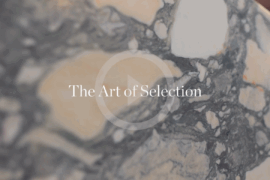
CDK Stone’s Natasha Stengos takes us through its Alexandria Selection Centre, where stone choice becomes a sensory experience – from curated spaces, crafted details and a colour-organised selection floor.

In an industry where design intent is often diluted by value management and procurement pressures, Klaro Industrial Design positions manufacturing as a creative ally – allowing commercial interior designers to deliver unique pieces aligned to the project’s original vision.
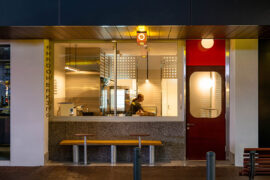
Working within a narrow, linear tenancy, Sans Arc has reconfigured the traditional circulation pathway, giving customers a front row seat to the theatre of Shadow Baking.
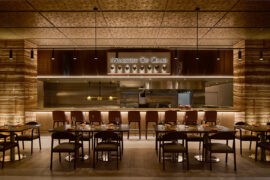
After more than two decades at Architects EAT, Eid Goh launches AIR, a new Melbourne-based studio focused on adaptive reuse, hospitality and human-centred design across commercial and civic projects.
The internet never sleeps! Here's the stuff you might have missed
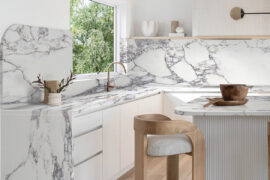
In creating interior spaces that enhance the wellbeing and experience of people, true responsible sourcing also considers the impact of materials and making.
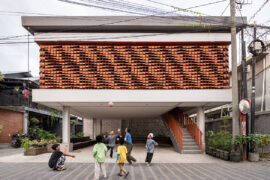
SHAU’s Kampung Mrican revitalisation transforms community life through social architecture, local collaboration and sustainable design.
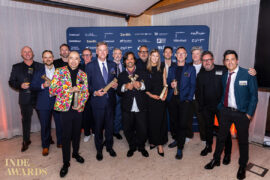
With the opening of the 2026 INDE.Awards program, now is the time to assess your projects, ensure photography is at hand and begin your submissions.

A thoughtful, low-waste redesign by PMG Group in collaboration with Goodman has transformed a dated office into a calm, contemporary workspace featuring a coastal-inspired palette and Milliken flooring for a refined finish.